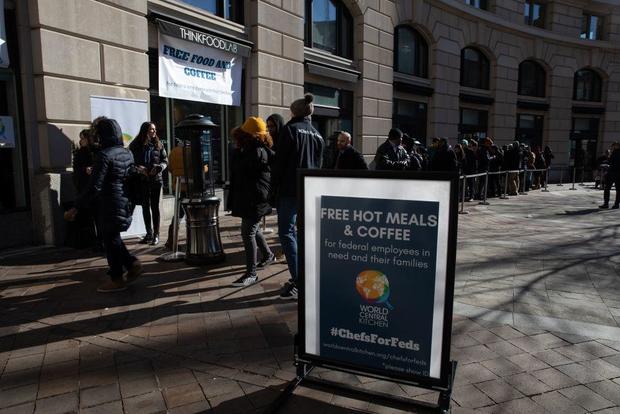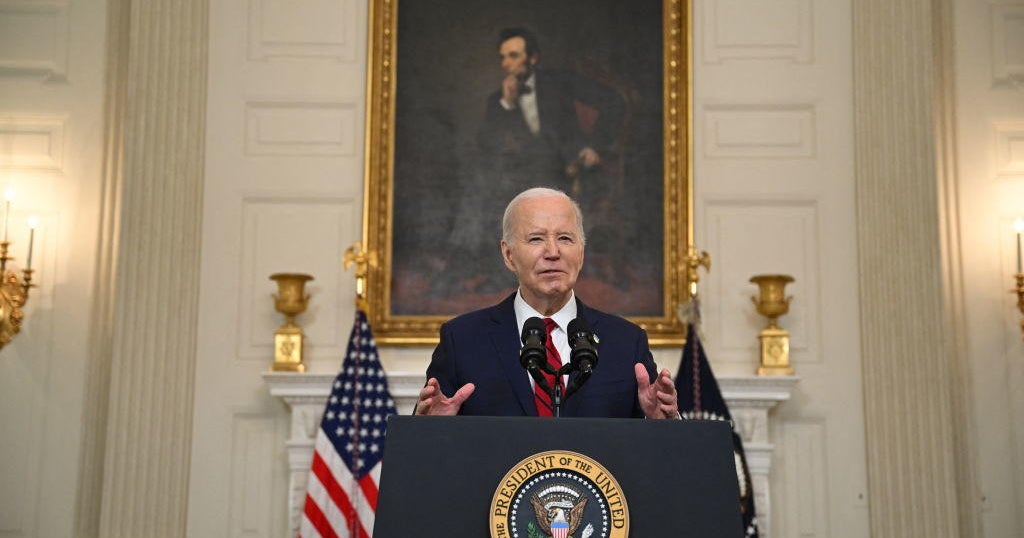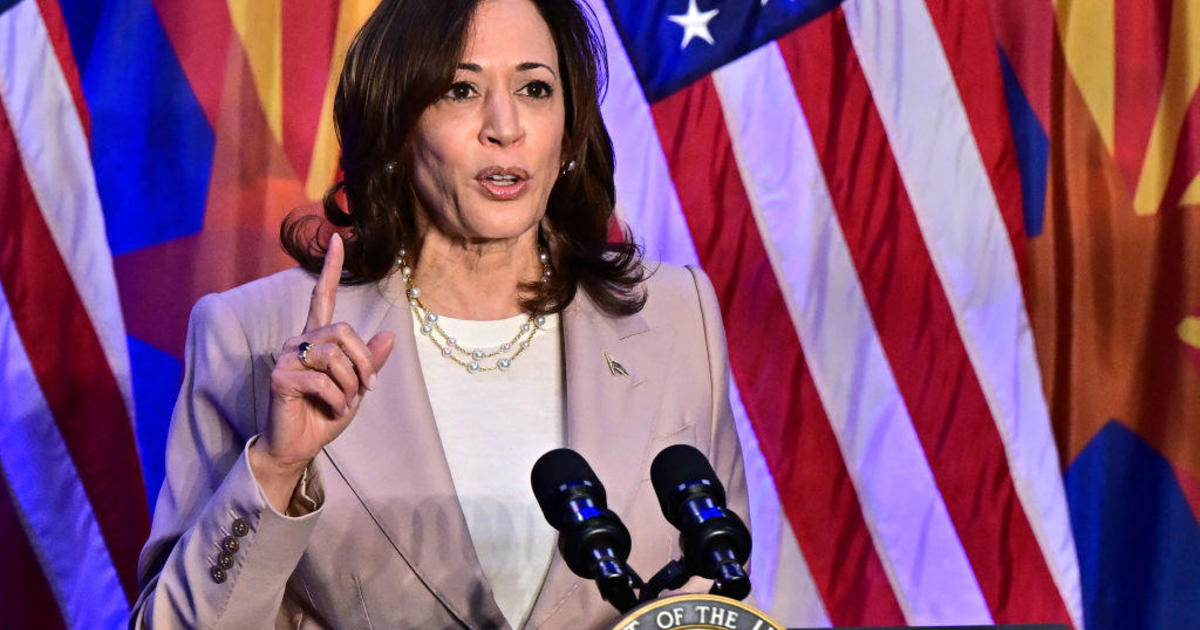What is a government shutdown? Here's what happens when funding runs out
Washington — House Speaker Kevin McCarthy on Saturday reached a last-minute compromise to keep the federal government running and avoid a costly shutdown. A 45-day stopgap spending bill with wide bipartisan support in both chambers passed both the House and Senate with hours to spare, and went to President Biden's desk for his signature.
The bill will fund the government through Nov. 17.
If no spending bill had been passed by midnight Saturday, it would have halted paychecks for some and closed federal parks and monuments.
On Friday, the House had previously rejected a measure that would have extended funding until Oct. 31 at lower levels, with 21 Republicans joining all Democrats in opposition. Republican infighting between moderates and the hard right had for weeks paralyzed the House from passing a short-term funding bill to keep the government open beyond Sept. 30, when funding for federal agencies would have run out.
Hard-right members had loudly voiced their objections to any short-term extension, arguing that the House should instead take up individual spending bills. They had threatened to oust McCarthy as speaker if their demands weren't met, or if he turned to Democrats for help passing the funding extension before the end of the month.
Noticeably missing from the short-term spending bill, however, was security and humanitarian aid for Ukraine, as well as disaster relief.
- Does Congress get paid during a government shutdown?
- A history of government shutdowns: The 14 times funding has lapsed since 1980
Here's what to know about what happens during a government shutdown:
What is a government shutdown?
Many federal government agencies are funded annually by a dozen appropriations bills that need to be passed by Congress and signed by the president before the start of the new fiscal year on Oct. 1. These are often grouped together into one large piece of legislation known as an "omnibus" bill.
If the funding deadline passes without Congress authorizing more spending, the government must fully or partially shut down, depending on which agencies are already funded. Lawmakers usually buy themselves more time by passing what's known as a continuing resolution, which temporarily extends current funding levels to keep agencies functioning while they work to reach an agreement on new spending.
The Constitution says the Treasury Department cannot spend money without a law authorizing it. Under a statute known as the Antideficiency Act, agencies are required to cease operations — with certain exceptions — in the absence of funding authorized by Congress. The act, a version of which first passed in 1870, with several significant updates since, also prohibits the government from entering into financial obligations without congressional sign-off.
"Treasury cannot pay out any money if there's not a law providing for who gets the money," said Matt Glassman, a senior fellow at the Government Affairs Institute at Georgetown University. "If those annual bills expire, then there is no law appropriating money for certain functions."
What happens during a government shutdown, and who is affected?
In a shutdown, the federal government must stop all non-essential functions until funding is approved by Congress and signed into law. Each agency determines what work is essential and what is not. Members of Congress make that determination for their own staff, as well.
"No money can come out of Treasury whether you're essential or not essential. But who can keep working and incur obligations, even when there are no appropriations — there are three exceptions," Glassman said.
Those exceptions are defined by the Antideficiency Act. They allow the government to fund operations to protect human life and property, and keep officials involved in the constitutional process on the job, like the president, his staff and members of Congress.
All active-duty military members, many federal law enforcement officers and employees at federally funded hospitals are considered essential, along with air traffic controllers and Transportation Security Administration officers.
Essential employees, even though they continue to work during the shutdown, are not paid while the government is shut down. They receive back pay once funding is restored to their agency. Employees in nonessential positions are furloughed until the government is funded again and don't come into work or get a paycheck. Under a 2019 law, however, they're guaranteed to receive back pay once the shutdown is over.
During a 16-day partial shutdown in 2013, roughly 850,000 federal employees out of a total of 2.1 million were furloughed at some point, according to the Office of Management and Budget.
What is open and closed during a shutdown?
It depends on what 12 annual appropriations bills have been enacted. Any agency that has its funding approved would operate as usual. Some programs that rely on fees for their funding also continue.
Depending on how long a shutdown lasts, national parks could close. Passport processing, hiring of new government employees and research at the National Institutes of Health could stop. Constituents' interactions with congressional offices could also be curtailed. The White House maintains a list of links to agencies' contingency plans in the event of a shutdown that can be found here.
Services like the Postal Service and entitlement programs, including Social Security, Medicare and Medicaid, are not halted during a shutdown because they are funded through permanent appropriations that don't require renewal. Entitlement payments keep going out, but staffing levels at the agencies could be affected and cause delays in enrollment or other service interruptions.
"Any type of interaction you're having at a customer service level with the federal government could definitely be affected," Glassman said.
Maya MacGuineas, the president of the Committee for a Responsible Federal Budget, said the public may not even notice the effects if the shutdown is short-lived.
"The truth is, most people won't really feel much of a difference," MacGuineas said. "If you've got a vacation planned to a National Park, you're going to be [upset] and disappointed. But most people will go on with their everyday lives and interact with the government the same way they do and not feel a big difference. That could get worse, the longer it lasts."
When was the last government shutdown?
The last government shutdown stretched from December 2018 until January 2019, when congressional funding for nine executive branch departments with roughly 800,000 employees lapsed.
The five-week partial shutdown cost the economy $11 billion, according to a Congressional Budget Office report. The CBO said most of that would be recovered once the shutdown ended, but estimated a permanent loss of about $3 billion.
Businesses across the country that relied on government customers reported a slowdown in business and some said they had to lay off employees. Tens of thousands of immigration court hearings were canceled. Government contractors struggled to feed their families and pay their bills.
The shutdown stemmed from a standoff over President Donald Trump's demand for $5.7 billion to fund a wall along the border with Mexico. Trump had vowed to close the government if the funding wasn't included in spending legislation, but Democrats refused to give in.
Trump conceded after insisting for weeks that he would not reopen the government without money for the wall, signing a bill to reopen the government for three weeks while Congress negotiated a spending deal.
Three weeks later, Trump signed a compromise spending bill to avert another government shutdown, ultimately accepting a bill that did not meet his $5.7 billion demand for his long-promised border wall.
When was the longest government shutdown?
Before the early 1980s, the government would typically continue operating as usual even when funding bills hadn't been passed, but that changed after the attorney general issued opinions stating that it was illegal for the government to spend money without congressional approval.
Since 1980, there have been 14 shutdowns, most of which lasted just a few days.
The longest shutdown in U.S. history, stretching from late 2018 into early 2019, lasted 34 full days. In that instance, government ground to a halt in a dispute over Trump's border wall, until he finally signed a funding bill.
Before that, the record was 21 days in 1995 and 1996, when President Bill Clinton held out against steep spending and tax cuts favored by Republican House Speaker Newt Gingrich.
Ellis Kim and Jack Turman contributed reporting.






